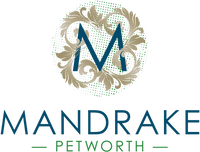Engraving from the 1st Edition of Audubon's Birds of America "Prairie Warbler"
Couldn't load pickup availability
Artist - John James Audubon (1785-1851)
Title - Prairie Warbler, Plate 14. [from] The Birds of America.
Published - London: Havell, 1827-1838.
Size - 55 x 38 cm (21 3/4 x 15 in) Plate mark
Size - 50 x 31 cm (19 1/2 x 12 1/4 in) Sheet Size
This is a folio copper-plate engraving with aquatint and etching, it is framed in a very attractive gilt and black frame, it is from the first edition of Birds of America and is engraving with aquatint and full hand-colouring, printed on cream wove Whatman Turkey Mil by Robert Havell Jr in London from 1827-1838, the print is laid onto a support, has very minor spotting and browning.
This is one of three Audubon plates from Birds of America we are offering today.
John James Audubon explored the American backwoods to discover, record, and illustrate its avian life. America’s most revered artist-naturalist, John James Audubon (1785—1851), is renowned for his extraordinary undertaking to record the birds of America. The images he created are icons of 19th-century art. Though he studied and drew from nature since childhood, it was not until 1819 when he was the father of two sons that John James Audubon fully embraced the life of an artist-naturalist with the support of his devoted wife, Lucy Audubon. In 1820, John James Audubon left his family in Cincinnati, embarking with a young apprentice, Joseph R. Mason. Mason worked with John James Audubon from 1820 until 1822, contributing mostly botanical elements to about 55 of John James Audubon’s paintings. Later, the artists George Lehman, Maria Martin, and his sons Victor Gifford Audubon and John Woodhouse Audubon assisted John James Audubon with botanical and landscape backgrounds. Published from 1827—38, the lavish double-elephant size folio of The Birds of America, spectacularly launched John James Audubon’s career as an artist-naturalist and publisher of natural history folios depicting North American birds and animals.








